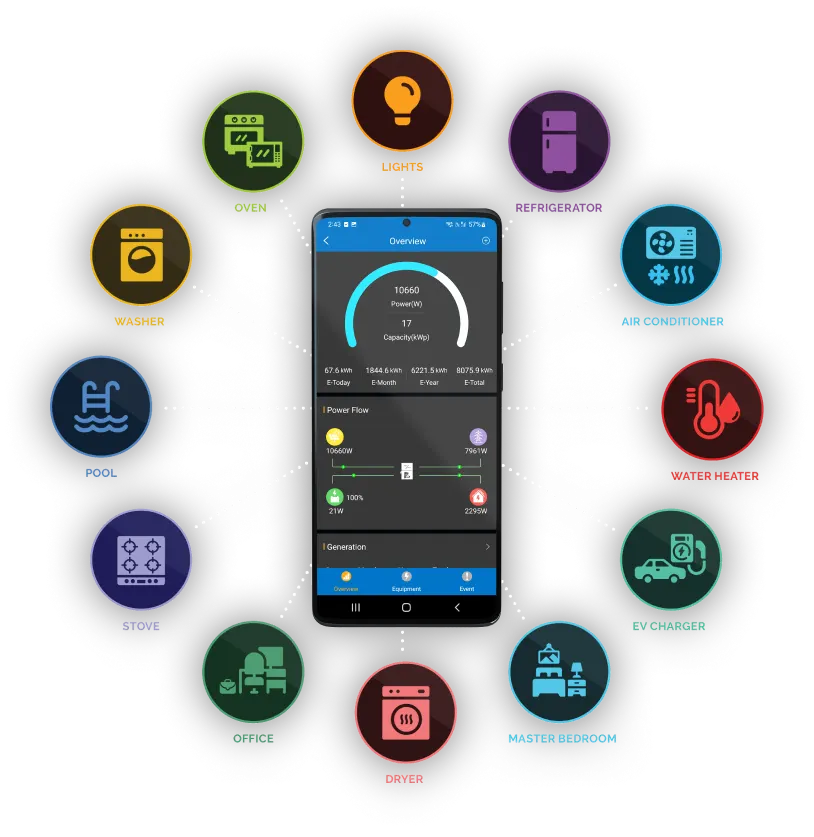We transform your energy
Unleashing the Power of the Sun
“It's like the new gold rush”





In an era defined by environmental consciousness and sustainable living, the spotlight on solar energy has never been brighter. As homeowners seek to reduce their carbon footprint and lower energy costs, solar power emerges as a game-changing solution. From rooftop panels to innovative technologies, the applications of solar energy for homes are revolutionizing the way we power our lives.
Clean & Renewable Source of Power for Residential & Commercial Buildings


Solar energy is a renewable form of energy that harnesses the power of the sun to generate electricity or heat. It is considered one of the cleanest and most abundant sources of energy available to us. Solar energy technologies have advanced significantly over the years and are increasingly being adopted as a viable alternative to traditional fossil fuel-based energy sources.
Governments and organizations around the world are increasingly investing in solar energy as a key part of their sustainable energy strategies. The continued development and adoption of solar energy technologies hold great potential for a cleaner and more sustainable future.
Solar panels, also known as photovoltaic (PV) panels, are the most common way to capture solar energy. These panels are made up of interconnected solar cells that convert sunlight directly into electricity. When sunlight hits the solar cells, it excites the electrons in the cells, creating a flow of electricity.
By installing solar panels on their rooftops, homeowners can significantly reduce their reliance on traditional grid electricity, lower utility bills, and even earn credits through net metering programs.











Efficiency of Solar Panels
PV panel efficiency is primarily determined by its ability to convert sunlight into usable electrical power. This conversion efficiency is influenced by several factors, including the quality of the solar cells, the type of semiconductor materials used, the design of the panel, and environmental conditions such as sunlight intensity and temperature.
There are different types of efficiency associated with PV panels such as Cell Efficiency, Module Efficiency or System Efficiency.
Factors Affecting Efficiency
Several factors can impact the efficiency of PV panels:
Solar Irradiance: Higher levels of solar irradiance (intensity of sunlight) result in increased electricity generation and higher efficiency.
Temperature: PV panel efficiency tends to decrease as temperature rises. This is because higher temperatures can reduce the performance of semiconductor materials, leading to lower conversion efficiency.
Shading: Shading from nearby objects, such as trees, buildings, or other obstructions, can reduce the amount of sunlight reaching the PV panels, thereby decreasing efficiency.
Panel Orientation and Tilt: The orientation and tilt angle of PV panels relative to the sun’s position can affect their efficiency. Optimal orientation and tilt angles maximize sunlight exposure and improve efficiency.
In Solargy, we consider all factors and your specific conditions to achieve the highest level of efficiency. We work with leading suppliers to install latest technology for resilience and performance.



Full Control over Your Solar Ecosystem
In the ever-evolving landscape of renewable energy, technological advancements continue to revolutionize the way we harness and manage solar power. One such innovation is the emergence of solar panel system control apps, which empower users to monitor, optimize, and manage their solar energy systems remotely. These intuitive applications leverage the power of connectivity and data analytics to provide users with real-time insights and control over their solar installations. Some common features of solar system control apps are
- Real-Time Monitoring
- Performance Analytics
- Remote Control and Management
- Energy Consumption Insights
- Alerts and Notifications
* Images are some samples of user interface (apps, software) from various manufacturers of solar systems for illustration.



Ottawa | Kingston Service Area
- Call Us 613-796-2302
- Email: [email protected]
- 88-110 Didsbury Road, Ottawa ON K2T 0C2

Solargy is a licensed distributor of solar energy systems, battery backup equipment, heat pumps, EV charger ports as a solar system designer and installer.

